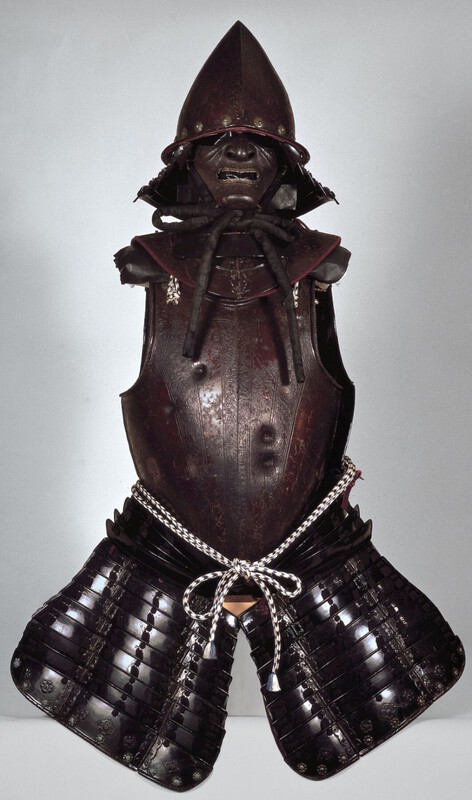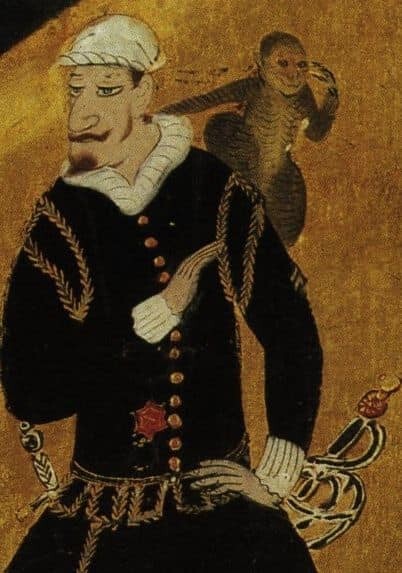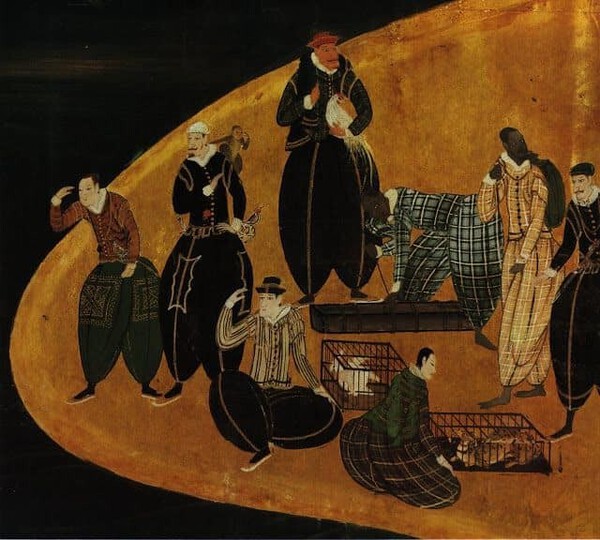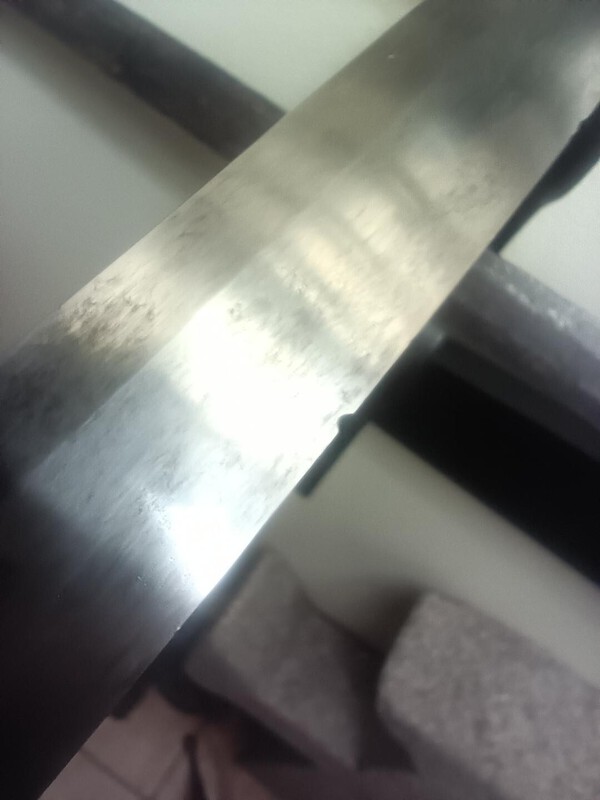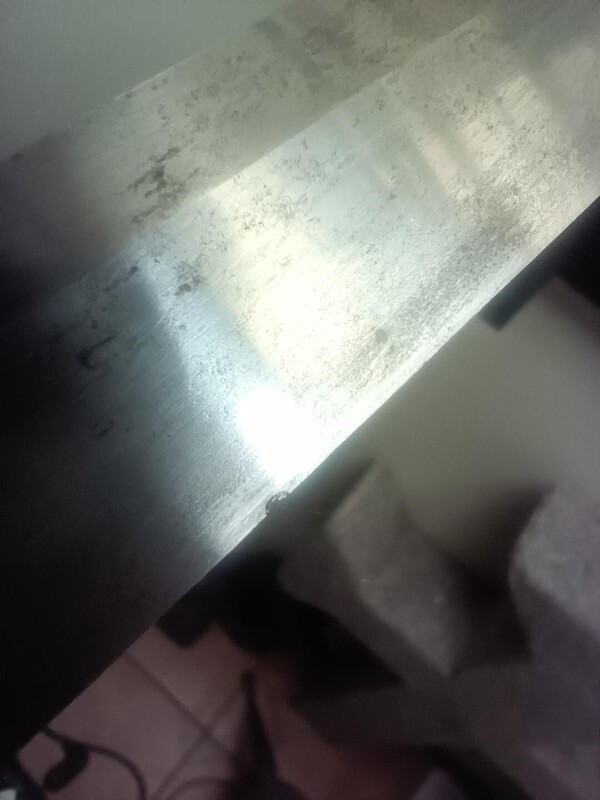
vieira
Members-
Posts
17 -
Joined
-
Last visited
Profile Information
-
Gender
Male
-
Location:
portugal
Profile Fields
-
Name
bruno vieira
Recent Profile Visitors
The recent visitors block is disabled and is not being shown to other users.
vieira's Achievements
-
Without revealing his name (i dont know if its services are public available or not) i can say its from italy and its a authorized tagishi with 33 years exprience and traditional shool, a top european colector recomended him to me. Regards, Vieira
-
Hello, I talked with a professional tagishi in europe, he said its possible, i would probably send him the blade in september, it can take up to 6 months all process, and its not cheap but.... i think this blade deserves it! after being in a wall for more than 200 years! Regards, Vieira
-
From what i research, and not talking of specific "Portuguese Swords" because Portuguese swords were equal do their european, for example the blades used by Portuguese were usualy German/Solingen, Portuguese did not have tradition in forging blades, they bought from Solingen, the superiority of the european arms in battle was related with the design, a katana needs a very near aproach to the enemy, Portuguese used what was called "7 palm rapiers" with 140-150 cms, this diferente in size would give superiority to Portuguese. Also the katanas were unable to penetrate the portuguese armours and the rapiers having long and thin blades could penetrate the Japanese armour, specialy the holes between armour components. The Dutch defeating the Portuguese is a complete diferent thing, it happen in another time period and the dutch were never outnumbered, it was completly the oposite! Its a complex subject that envolves the fact that the Portuguese king disapeared in a battle in africa, it had no soons and the next person in line of succession was the also Spanish king "Philip I", so we got ruled by the Spanish... Regards, Vieira
-
Most reports of the europeans are in portuguese and spanish archives in old portuguese and old spanish. There is a book "The Christian Century in Japan (1549-1650), University of California Press, 1951" that has a chapter in 1610 where 40 portugueses fight agains 3000 samurais, you can start with that. Most persons don't know but the Portuguese enslaved Japanese, that was one of the reasons that Portuguese eventualy got expell from Japan, at some time it was often to bring Japanese girls and childs to sell them in Lisbon to rich families. Portuguese also sold black slaves to Japanese, Yasuke the first black samurai was indeed sold by Portuguese. Portuguese were military superior and make some deals with certains Japanese clans, to support them agains't rival clans, it was the Portuguese who brought the firearms to Japan to TANEGASHIMA island, still today they celebrate every year this event. Check this picture of a Japanese/PORTUGUESE armour mix.
-
The only thing you may laught (or not) is that were the Portuguese and not the British to discover most the unknown world at the time, for more than 200 years portuguese ruled the seas and many places in the world, the british, the dutch and every other europeans are later stuff.
-
-
Hello, The Japanese swords are indeed the result of a very complex fabrication and have a great quality, the xray study of the first paper is interesting and valid, today we already have available portable XRFs too, it would be interesting to scan some swords to see their composition and compare to european of the same period. The second paper for me is much less valid, Toledo blades were famous for their quality until the medieval times, the city then was completed devasted by the bubonic plague, most of the swordsmiths die or leave the city, only centuries later the city restart the fabrication of swords, all the old knowledge was lost because as i explained earlier the europeans did not documented the fabrication process of weapons, it was a state secret. To compare a 19th/20th Toledo blade with a Japanese one or Compare a Toledo blade with a Soligen one, the Toledo is of inferior quality. To do a fair compare we would have to get one of the legendaries Toledo blades, XIV/XV centuries. About the polish process, i am still trying to understand the science behind it, i know there is a fantastic book that may give that knowledge to understand the basics at least "The Connoisseurs Book Of Japanese Swords" but i was unable to find it and a acceptable price, in amazon they are asking 400 euros for it.... Now touching a very sensitive issue for any Japanese swords colector , the real superiority (or not) in battle of Japanese swords and Samurais against other warriors! In that case we have to study the history of the first encounters betwen Japanese Samurais and Europeans! The Portuguese were the first Europeans to reach Japan, there are chronicles of fights betwen the Portuguese and the Samurais and for what i came across, the Samurais had many losts, the Samurai situation was so bad that a new special kind of Japanese sword was made to fight the Portuguese! (ANY PICTURES OF THIS SWORDS ?? I DID NOT FIND, I KNOW THEY ARE VERY RARE). Also at some time the Portuguese were forbidden to take the rapiers ashore because of quantity of samurais they killed. The Portuguese chronicles are in obvious old Portuguese, but some persons have translate some parts: "Maybe no recorded personal duel per se but the story about the Portuguese being banned from bringing swords (rapiers) ashore during the extensive trading exchanges in Kyushu is documented. The reason for the ban was linked to the fact that the Portuguese originally cut down so many samurai. The local samurai responded by having new swords made which were much lighter than the battle blades they normally carried. Later, another encounter occurred and a virtual small scale war ensued with many Portuguese dying in the skirmish. I know about this because a distant relative of my teacher actually took part in this bit of historical trivia. My teacher (Takamura Yukiyoshi) still owned his relatives sword which was made specifically in response to the Portuguese sword tactics the samurai encountered in Kyushu. Like the famous Kogarasu Maru, this sword was double edged from about 5 inches to the kissaki but much lighter and faster. This design was adopted to allow a swift back-cut like the ones the Portuguese employed so effectively against the samurai with rapiers. Once armed with swords of this style, the samurai turned the tables even on the Portuguese in the second encounter. This is when the ban was finally instituted. The whole trading relationship was threatened….”" Regards, Vieira
-
And what do you guys think about the possibility of "war swords" and "Uniform swords", what i mean is, a samurai could have a sword that only used in special events (passed from generation to generation maybe) and one or several war swords, i referer this because some swords seem so well preverved that i doubt where used in battle, steel agains steel, sword against sword must have done some damage, any of you aware of this possibility ?
-
Blade composition Era Carbon (edge) Carbon (body) Manganese Silicon Phosphorus Copper 1940s 1.02% 1.02% 0.37% 0.18% 0.015% 0.21% 1800s 0.62% 1.0% 0.01% 0.07% 0.046% 0.01% 1700s 0.69% 0.43% 0.005% 0.02% 0.075% 0.01% 1500s 0.5% 0.5% 0.005% 0.04% 0.034% 0.01% In 1993, Jerzy Piaskowski performed an analysis of a katana of the kobuse type by cutting the sword in half and taking a cross section. The analysis revealed a carbon content ranging from 0.6 to 0.8% carbon at the surface and 0.2% at the core. I think the quality of the katana is directly related to the fabrication process! A viking sword has more carbon than most 1500 era katana swords. Fantastic swords from the "masters" could have secrets that enable them to be better than most... we don't know!! but i strong believe in that possibility.
-
I never said that Japanese swords are inferior! i only said most of the natural iron in Japan is of less quality than in some other places in the world! that is a different thing, a pure geological issue! but even with that limitation Japanese craftsman invented technology to make good steel and good weapons! Comparing these swords quality to the European, most European swords are of inferior construction quality than the Japanese. The Europeans had the advantage of having good steel without needing to do a wasteful process like the Japanese and of course there were also very good craftsman in Europe. One interesting thing is that Japanese documented the fabrication process of the swords, Europeans didn't, we know very little about the fabrication process of the best European swords, in most places it was strictly forbidden do to documentation of the building process, it was considered a state secret and so the knowledge was passed only by word between generations of families and eventually lost with the arrived of firearms. I currently study the blade i post earlier, today if i have time i'am gone measure all the blade at different points. Yesterday i was analyzing the sharp edge and i encounter 2 faults, the blade has damages in 2 places, i guess from knocking another object, maybe in battle ? who knows!! my question is, the Japanese polish process will fix these kind of things ? or this blade is either the way damage for life ? How often this kind of damage appears in old Japanese swords ? Tks all again. Regards, Bruno Vieira
-
Hello! Yes i understand now that the "polish" word is very diferent from nihonto world to european weapons worlds, the Japanese polish envolves reshaping of the sword, and going much more into the deeper metal layers than the european polishing thats why i said earlier that from what i see this blade if went to Japan would have a much more agressive sanding! The Japanese process is unthinkable for a european weapons colectors like me because it destroys the patine that is a layer/deposit of materials that is formed with time and it's impossible to recreate in other way, its what values and gives autenticity to a 800 years old sword! From what i understand Japanese like to preserve the swords like they were made yesterday! To achieve this goal overtime even for a sword that is well preserved these polished process is a "must" because every metal in contact with just the AIR will indeed develop the patine layer. All of this makes the colecting of Japanese swords a very strange process to me! You have a blade and the value of the blade is very dependent of the polish process, that i guess must be very expensive and envolving sending the blade to Japan! About the manufactor of the swords and the metal used, from what i research earlier, Japanese iron as encounter in nature is of very poor quality, so the Japanese created a process to make it better, they are great craftsman and make this process almost like a religion, the Japanese swords are of fantastic quality, one of bests in the world, and the sharpest i have seen! Oposed to this, in europe, in Soligen/Germany, there is in nature one of the best iron in all world, so this town is well known for centuries for making the best quality blades! When europeans reach Japan (the Portuguese like myself!) there were battles betwen the Samurais and the Portuguese, i have read some chronices about it, they were quite impressed with the quality of the Japanese blades but Japanese blades had 1 big problem against europeans, in Japan metal armours where not used, in Europe they were used for centuries and so they were quite developed, using tempered steel that was bullet prooft, these katanas stand no chance against this armours, imagine such sharp katanas agains a big layer of tempered steel, the result would be disastrous for the katana. Its a fantastic world this of katanas, tks all for the information you are providing me! Regards, Vieira
-
Makes no sense ? maybe i did not understand the meaning...! sory i am newbiew in Japanese swords... all sword with tang measures 82 cm, the blade is 67 cm
-
Very interesting here it goes. nakago -> 82cm magasa -> 67cm kissaki -> 6cm kisane-> 0.6cm
-
Ok! but it was only cotton! the blade was not scratch our wound in any way! i would love to know the diference betwen european and Japanese processes, i am portuguese, we portuguese were the first europeans ones to reach Japan, we battle samurais and win most of the time, samurais were not used to fight the european style with rapiers and left hand daggers! But i admit these Japanese blades are something else in sharpness, european blades are not so sharp. Tks Vieira
-
Yes but that factor is universal for any edged weapon, as i said i used only cotton polish no way it could take out metal its just a soft cleaning, and has i said earlier i watched some videos of the Japanese traditional process, this blade because of the black spots if it went to Japan to polish they would take a much more agressive 1st step to go deeper in the metal, noting compared to cotton! ofcourse i will not use anything with the capacity to scratch the metal. tks. Vieira

